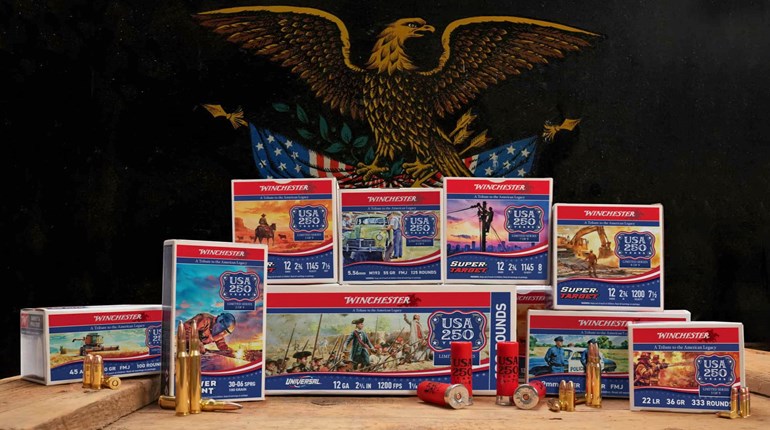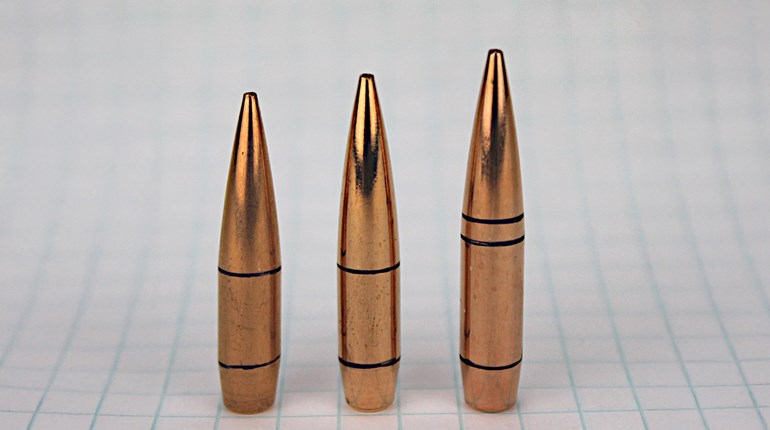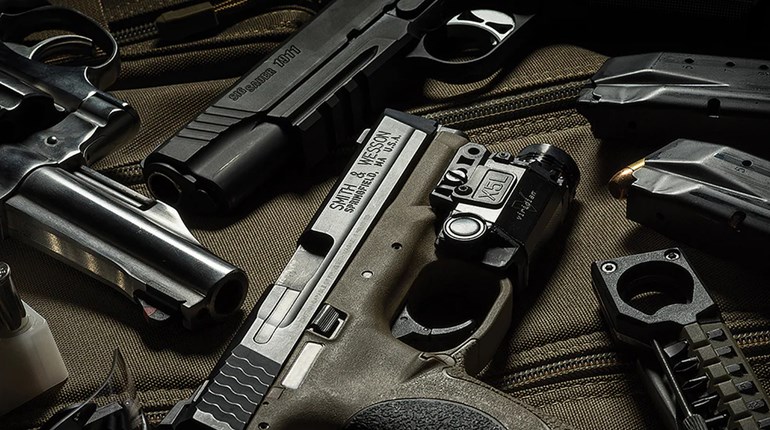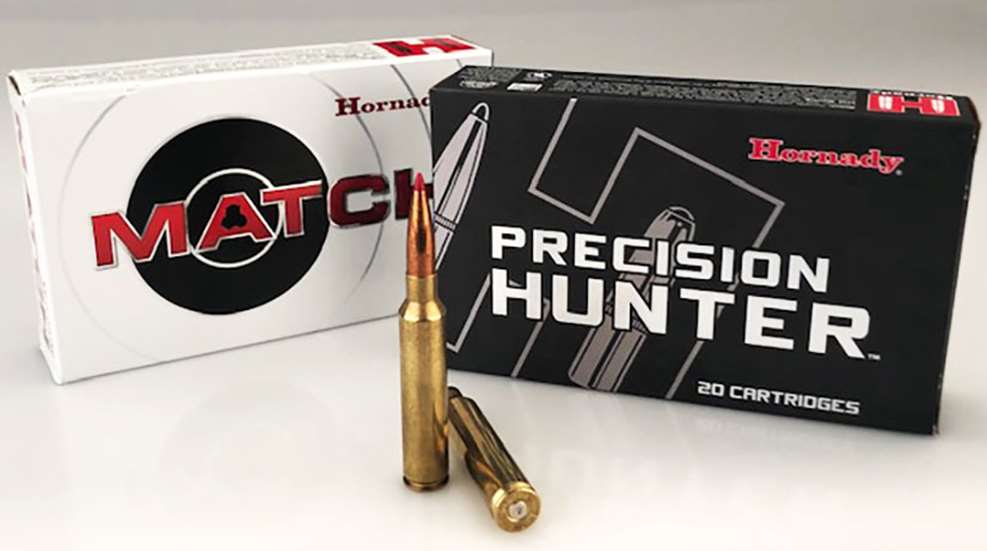
Hornady today releases the .300 PRC (Precision Rifle Cartridge), a beltless non-rebated .30-caliber magnum rifle cartridge designed for extreme performance at long range.
The cartridge is not simply a necked-up version of Hornady’s other recent introduction, the 6.5 PRC. The latter is based on the .300 Ruger Compact Magnum. The .300 PRC is based on the .375 Ruger Compact Magnum; call it a .30-375. Maximum cartridge overall length is 3.700 inches. Case length is 2.580 inches (rim to case mouth); head height is 1.120 inches; throat diameter is .3088 inch; head diameter is .532 inch.
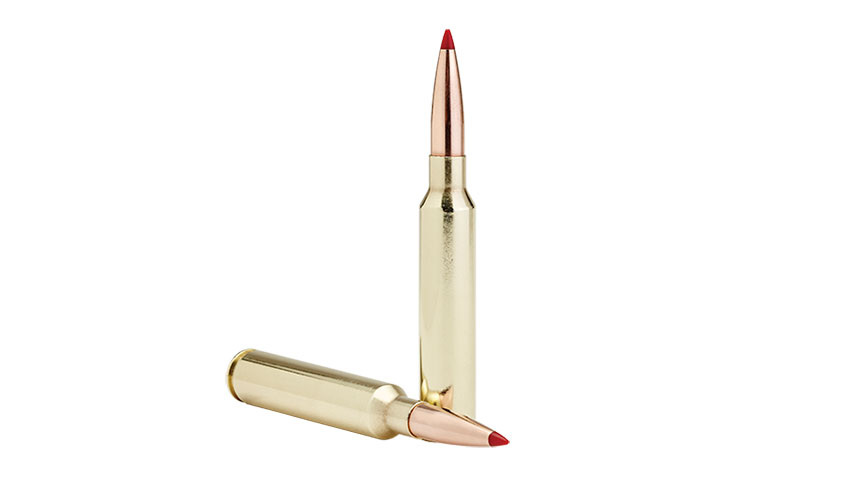
The 2.580-inch case creates capacity for 75-80 grains of powder to push big .30-caliber bullets at high velocity. So the cartridge has the capacity to kill not only most big game but also many existing .30-caliber magnums.
But does the shooting world need another .30-caliber magnum?
“We needed it,” said Jayden Quinlan, ballistician at Hornady. “Gun guys build actions,” he said at a September pre-release field-test in Texas. To cover the most bases, to be sure a rifle model will fill plenty of wants and needs, he explained, gunmakers design rifles to incorporate the most cartridges in one action. So existing actions are based around old cartridge and bullet design. “Ammo guys build ammo to spec,” he continued. “They build ammo based on fit in existing actions. This creates a limited design cycle. So we thought, ‘This is not working. Let’s do what we want. Let’s do what we need.’”
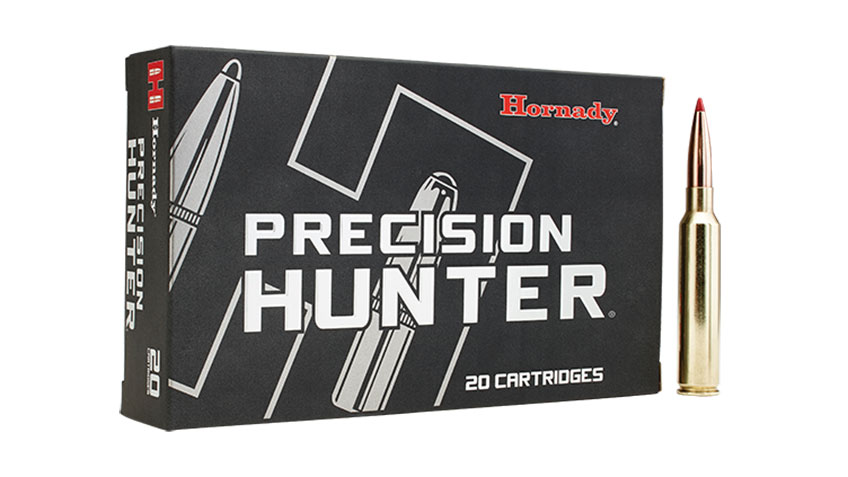
But to answer that question more fully, consider an itemized list of the .300 PRC’s characteristics.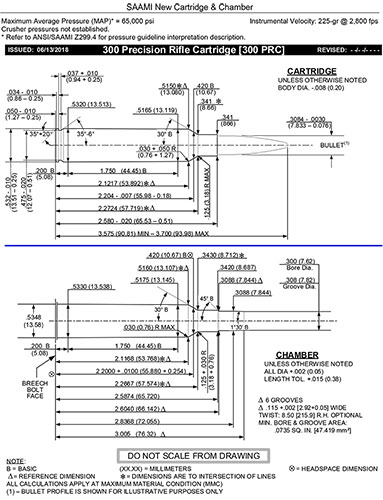 The .300 PRC features a cartridge/chamber design geared for precision shooting. Its overall length allows bullets to be seated farther out from the body as compared to other .30-caliber magnums to ensure proper throat length. So it may accommodate both modern long-range and traditional bullets. The .532-inch, non-rebated case head fits a standard magnum bolt face. The beltless case displays optimum body taper, shoulder angle (30 degrees) and neck length. It is designed to ensure temperature stability; to produce uniform pressure and velocity; to use every bit of case capacity; and to deliver adequate and consistent barrel life. Hornady factory offerings released today utilize modern, long-range bullets—the 225-grain ELD-M and 212-grain ELD-X—traditionally available only to the handloading community.
The .300 PRC features a cartridge/chamber design geared for precision shooting. Its overall length allows bullets to be seated farther out from the body as compared to other .30-caliber magnums to ensure proper throat length. So it may accommodate both modern long-range and traditional bullets. The .532-inch, non-rebated case head fits a standard magnum bolt face. The beltless case displays optimum body taper, shoulder angle (30 degrees) and neck length. It is designed to ensure temperature stability; to produce uniform pressure and velocity; to use every bit of case capacity; and to deliver adequate and consistent barrel life. Hornady factory offerings released today utilize modern, long-range bullets—the 225-grain ELD-M and 212-grain ELD-X—traditionally available only to the handloading community.
Now consider the fact there has never been a SAAMI-standardized, factory-produced .30-caliber magnum cartridge with all the preceding attributes.
That’s right, the cartridge already is SAAMI-standardized—Hornady made sure of that prior to release to speed the cartridge’s adoption. SAAMI lists a maximum average pressure (MAP) of 65,000 PSI, same as the 6.5 PRC. With a 3.7-inch maximum COAL, the .300 PRC will fit, feed and function in existing long actions. Rifles I have seen and used include bolt-action models from GA Precision and H-S Precision, built for Hornady to cover this release. Quinlan tells me detachable box magazines currently available for the .300 PRC include offerings from AI, Accurate Mag, H-S Precision and MDT.
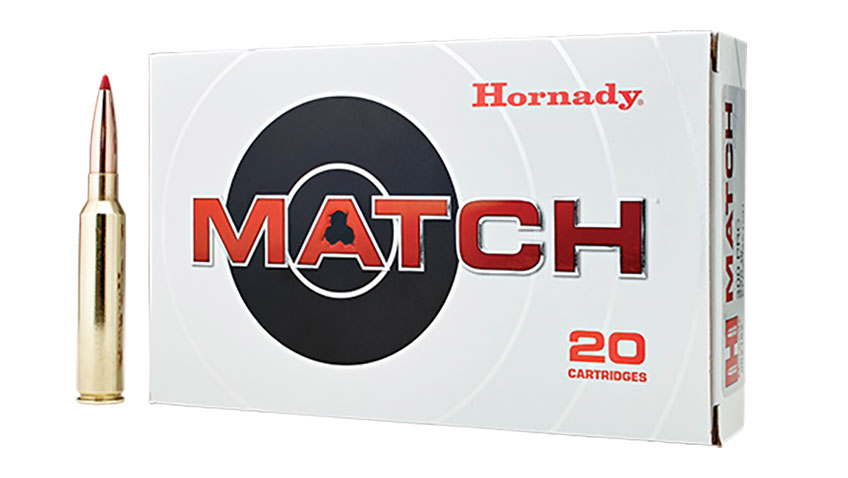
The 225-grain ELD-M carries a G7 ballistic coefficient of .391 (G1 is .777); the Hornady factory load travels at an advertised muzzle velocity of 2860 fps. In pre-release testing at FTW Ranch in Barksdale, Texas, in September, our group noted average velocity of 2876 fps with the load. At that speed, at 1,000 yards velocity is still 1835 fps. Energy is a whopping 1,682 ft.-lbs. Time of flight to reach that 1,000-yard mark is a mere 1.305 seconds. Of course to zero the GA Precision rifles we used, our group fired the new cartridge at 100 yards. Quickly thereafter, we progressed to 500, 800, 1,000, 1,400 and 1,800 yards. Accuracy using the Hornady 4DOF (four degrees of freedom) ballistic calculator (available free on Hornady’s website and both the Apple App and Google Play stores) ensured unbelievably consistent first-hit capability at all distances. Simply put, this thing acts like magic so long as the shooter does his part.
I used a 225-grain ELD-M to shoot a hog in fading light at FTW. Distance downhill was 433 yards. Point of aim equaled point of impact—right between the shoulder blades—and one dead hog. But while the ELD-M may be adequate for much game, hunters should be interested in the expanding 212-grain ELD-X, with a G7 BC of .336 (G1 is .673). This fall, I will use the load to hunt elk. Results from that real-world test will be reported later.
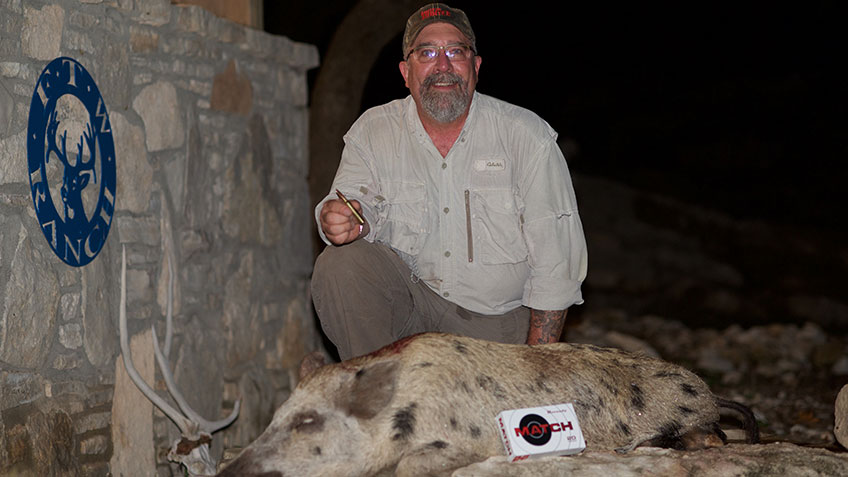
Like the 6.5 PRC, the .300 PRC should meet demand for increased accuracy in today’s trending sport of long-range shooting. Time will tell if it captures the hearts (and dollars) of hunters and shooters. Here’s betting it will.












